Trapezoidal Shape Volume (equal slopes at opposite sides) - Proof of Equations
In this trapezoidal volume calculations, the opposite sides have the same slopes. As the result, centers of bottom and top
rectangles are at the same vertical line.
•
•
•
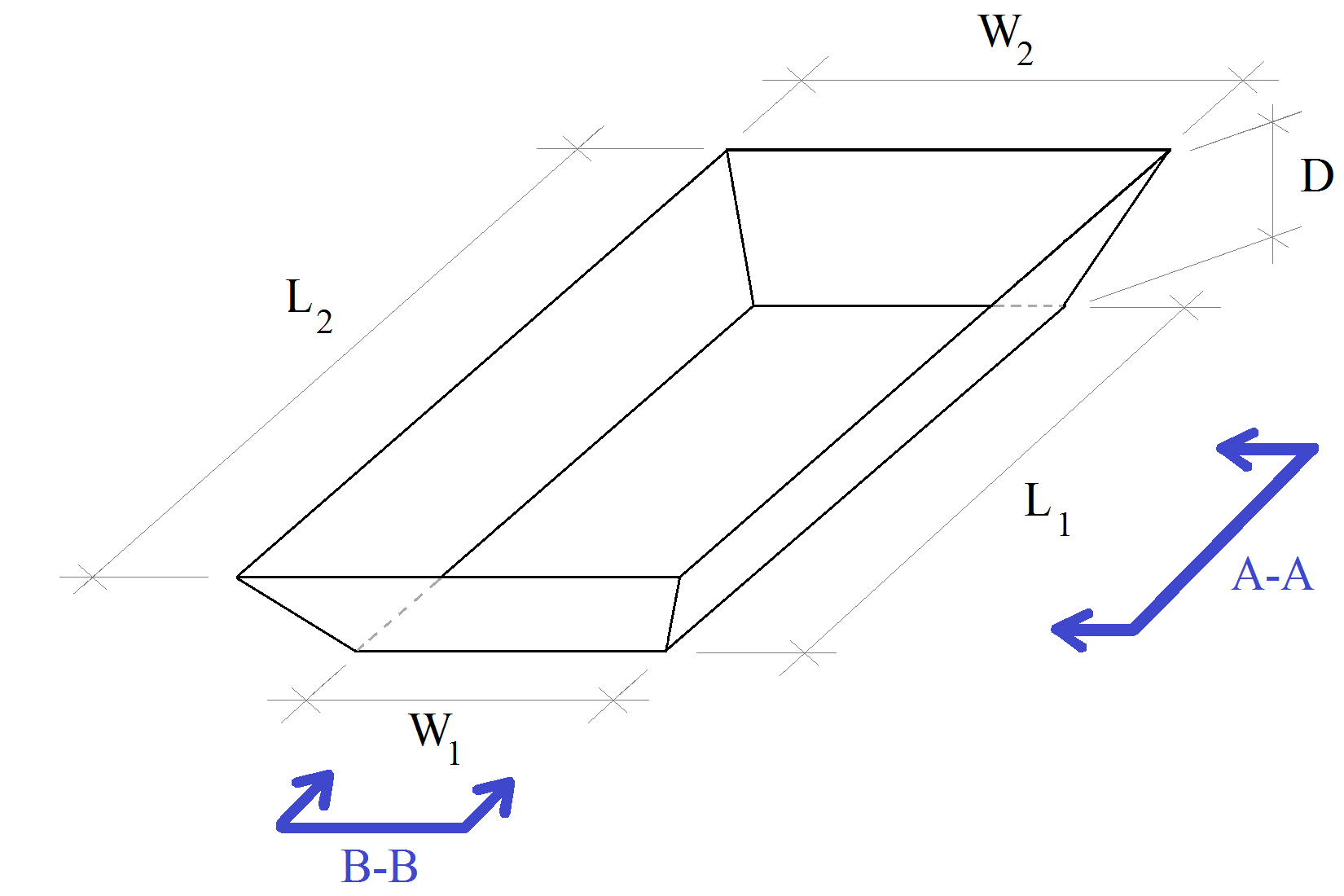
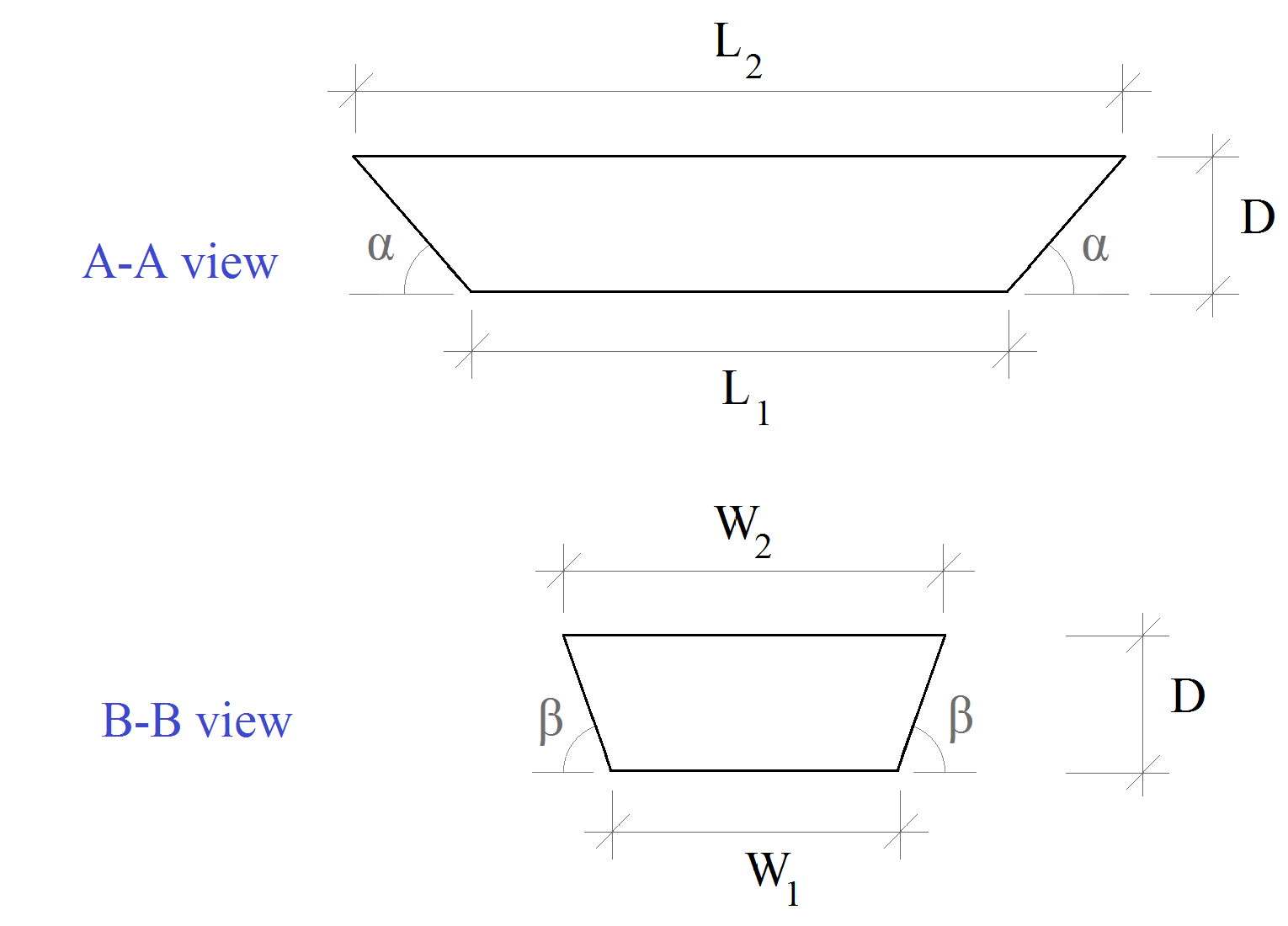 L2 = L1
+
L2 = L1
+
2D
/
tan α
W2 = W1
+
2D
/
tan β
In order to calculate the volume, the solid is divided into different sub-volumes:
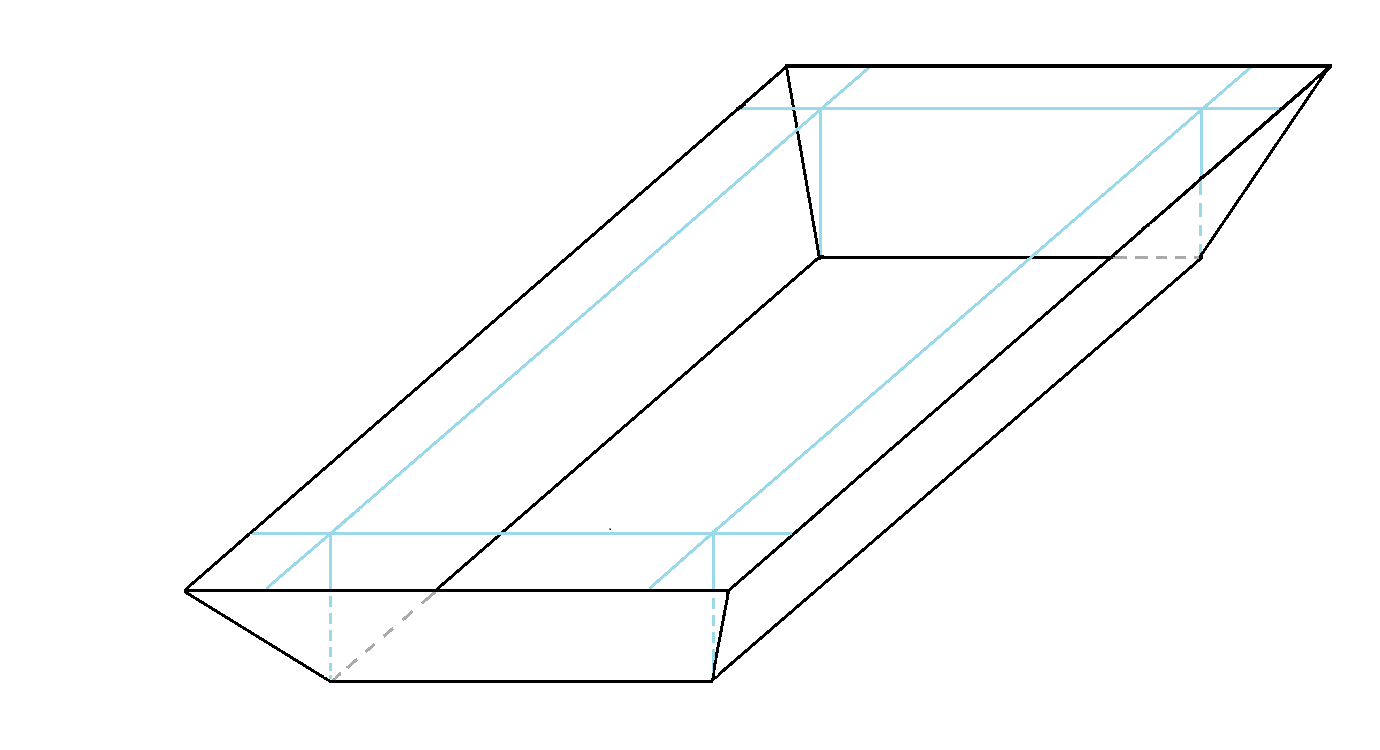
a) Center rectangular box, V1:
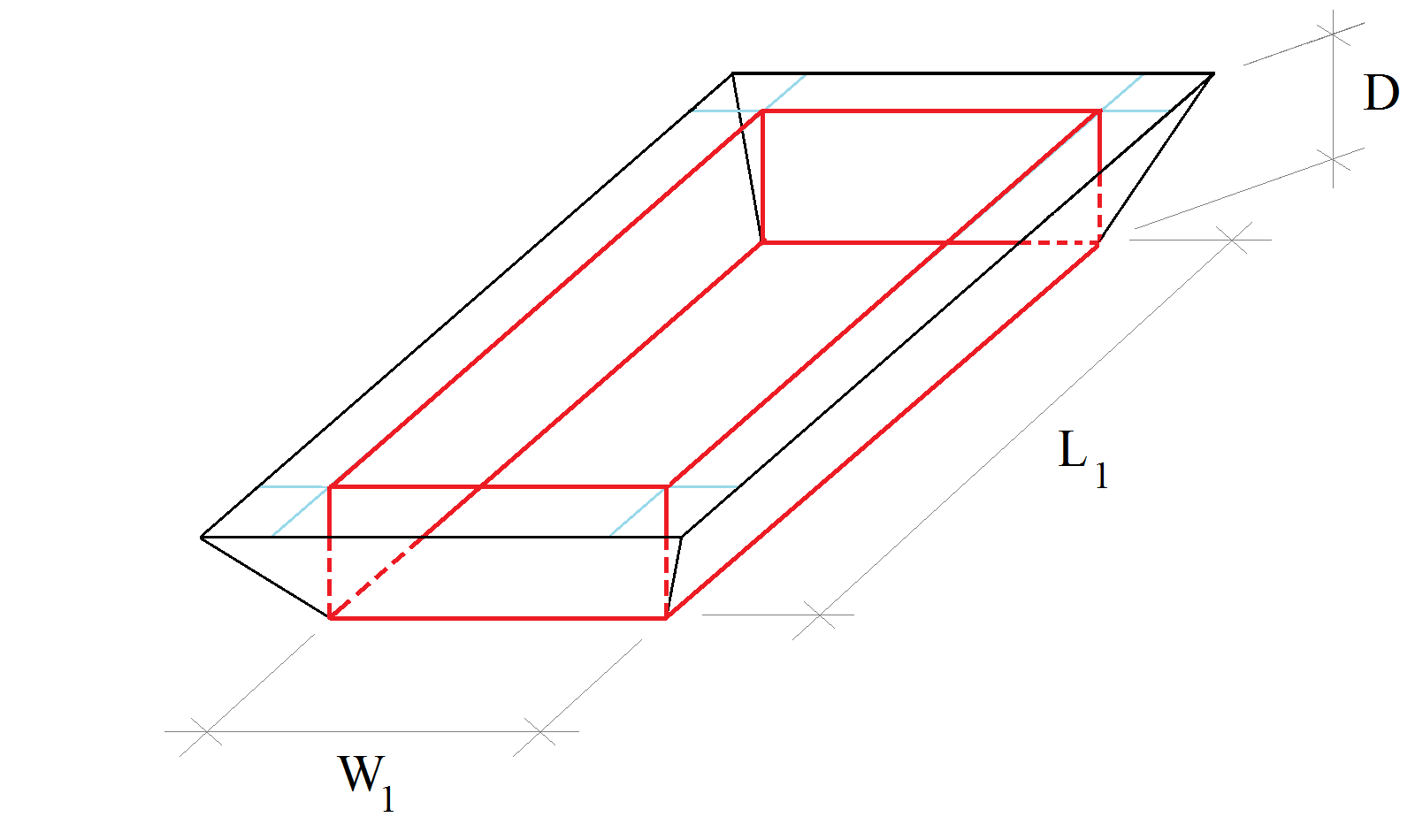
V
1 = W
1 L
1 D
b) Corner pyramids, V2:

V
2 = 4 (corner pyramid volume) = 4 (
W2 – W1
/
2
) (
L2 – L1
/
2
) (
D
/
3
)
V
2 =
(W
2 – W
1)
(L
2 – L
1) (
D
/
3
)
c) Side triangular prisms, V3:
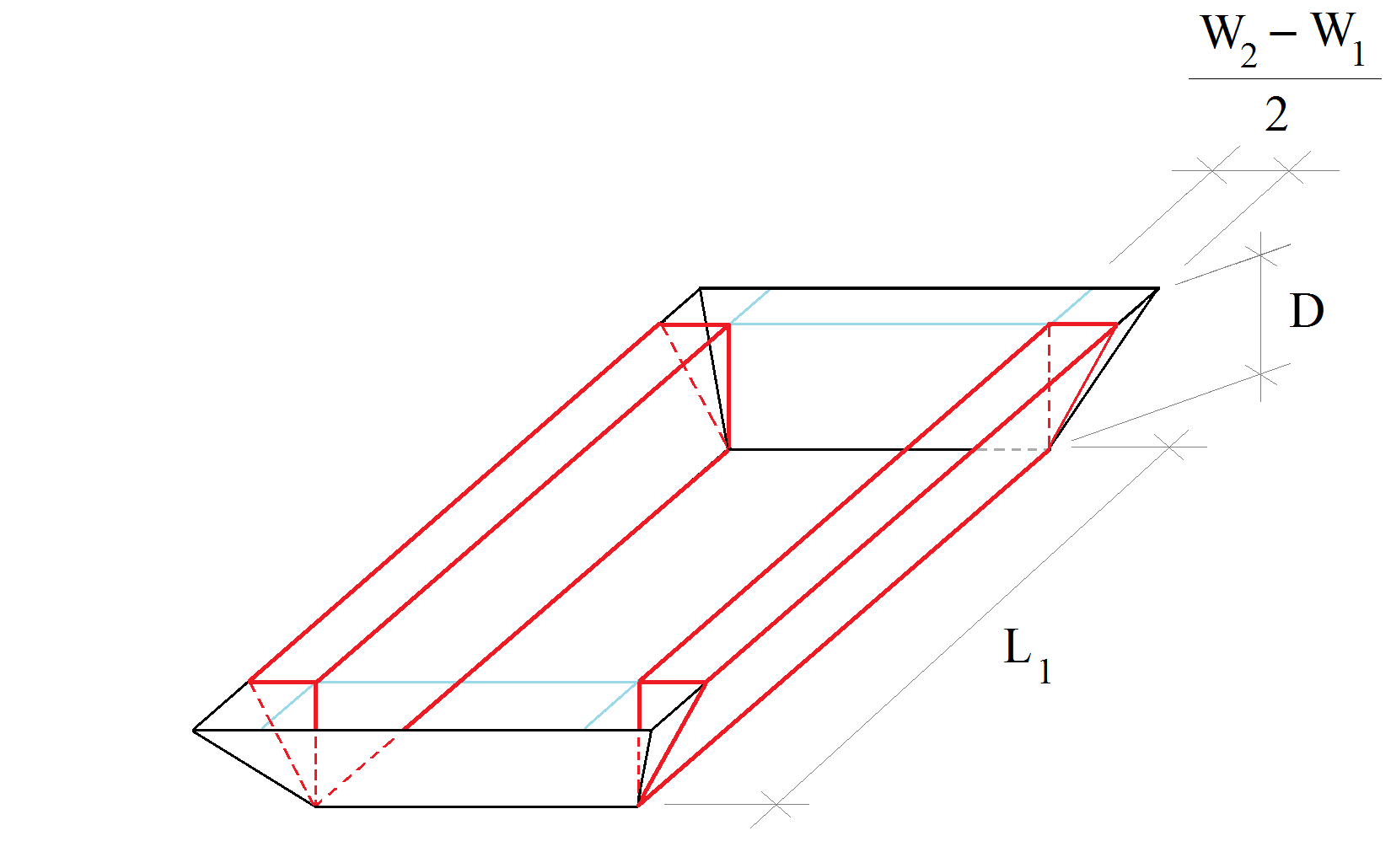
V
3 = 2 (side triangular prism volume) = 2 (
W2 – W1
/
2
) (
D
/
2
) L
1
V
3 =
(W
2 – W
1) (
D
/
2
) L
1
d) Side triangular prisms, V4:
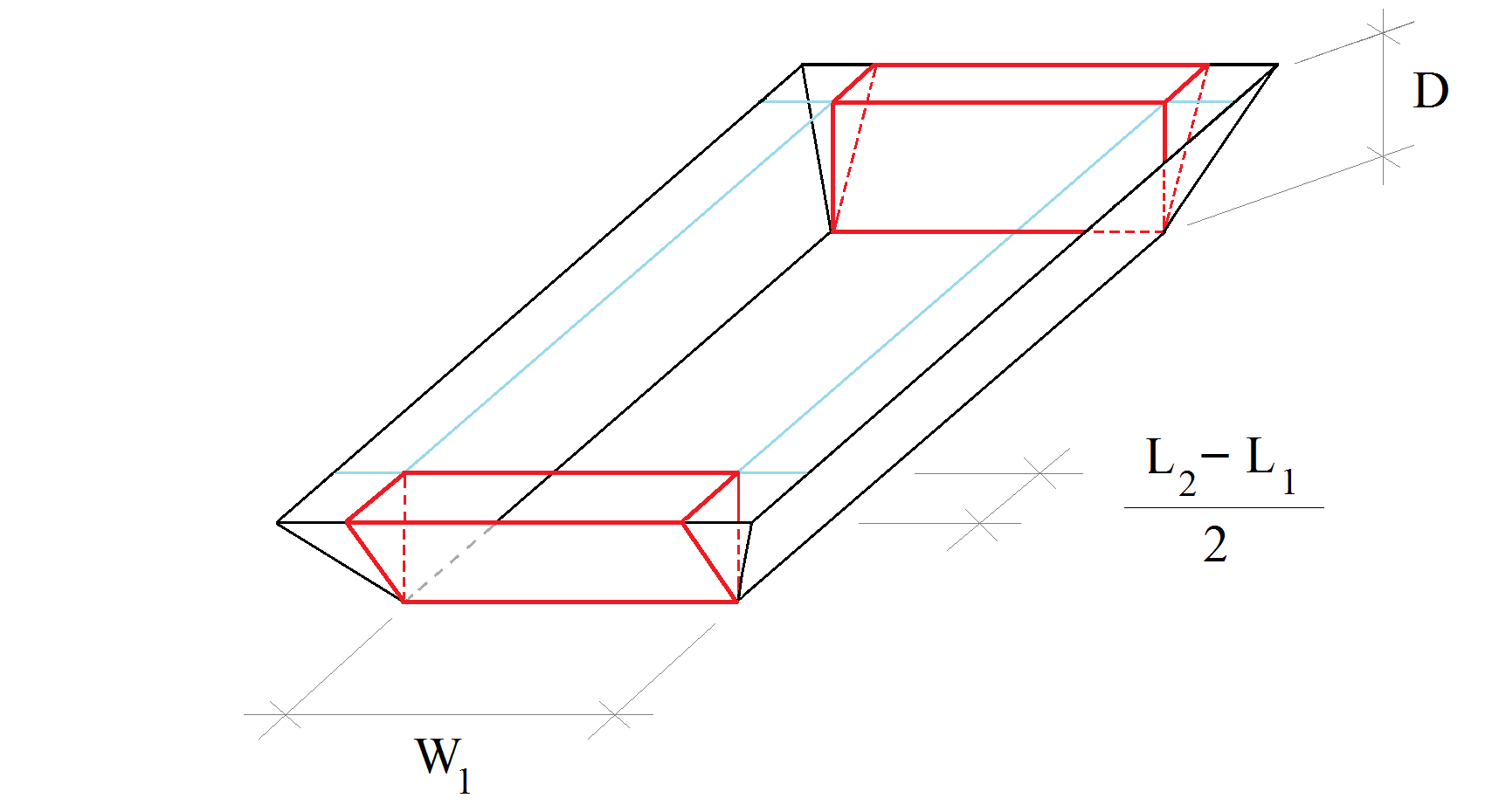
V
4 = 2 (side triangular prism volume) = 2 (
L2 – L1
/
2
) (
D
/
2
) W
1
V
4 =
(L
2 – L
1) (
D
/
2
) W
1
Trapezoidal volume, V, in terms of D, W1, L1, W2, L2:
V = V
1 + V
2 + V
3 + V
4
V = W
1 L
1 D
+ (W
2 – W
1)
(L
2 – L
1) (
D
/
3
)
+ (W
2 – W
1) (
D
/
2
) L
1
+ (L
2 – L
1) (
D
/
2
) W
1
V = D [W
1 L
1
+ (W
2 – W
1)
(L
2 – L
1) (
1
/
3
)
+ (W
2 – W
1) (
1
/
2
) L
1
+ (L
2 – L
1) (
1
/
2
) W
1 ]
V = D [W
1 L
1
+ (
W2 L2
/
3
–
W2 L1
/
3
–
W1 L2
/
3
+
W1 L1
/
3
)
+ (
W2 L1
/
2
–
W1 L1
/
2
)
+ (
W1 L2
/
2
–
W1 L1
/
2
) ]
V = D [
W
1 L
1 (1 +
1
/
3
–
1
/
2
–
1
/
2
)
+
W2 L2
/
3
+ W
2 L
1 (
–1
/
3
+
1
/
2
)
+ W
1 L
2 (
–1
/
3
+
1
/
2
) ]
V = D [
W1 L1
/
3
+
W2 L2
/
3
+
W2 L1
/
6
+
W1 L2
/
6
]
V =
D
/
6
(2 W1 L1
+ 2 W2 L2
+ W2 L1
+ W1 L2 )
Trapezoidal volume, V, in terms of D, W1, L1, α , β :
V =
D
/
6
(2 W
1 L
1
+ 2 W
2 L
2
+ W
2 L
1
+ W
1 L
2 )
Substitute W
2, L
2 with:
W
2 = W
1
+
2D
/
tan β
, L
2 = L
1
+
2D
/
tan α
V =
D
/
6
[2 W
1 L
1
+ 2 (W
1
+
2D
/
tan β
)
(L
1
+
2D
/
tan α
)
+ (W
1
+
2D
/
tan β
)
L
1
+ W
1
(L
1
+
2D
/
tan α
) ]
V =
D
/
6
[2 W
1 L
1
+ 2 (W
1 L
1
+
2W1
/
tan α
D
+
2L1
/
tan β
D
+
4
/
(tan α)(tan β)
D
2 )
+ W
1 L
1
+
2L1
/
tan β
D
+ W
1 L
1
+
2W1
/
tan α
D ]
V =
D
/
6
(2 W
1 L
1
+ 2 W
1 L
1
+
4W1
/
tan α
D
+
4L1
/
tan β
D
+
8
/
(tan α)(tan β)
D
2
+ W
1 L
1
+
2L1
/
tan β
D
+ W
1 L
1
+
2W1
/
tan α
D )
V =
D
/
6
[6 W
1 L
1
+ (
6W1
/
tan α
+
6L1
/
tan β
) D
+
8
/
(tan α)(tan β)
D
2 ]
V = W1 L1 D
+ (
W1
/
tan α
+
L1
/
tan β
) D2
+
4
/
3 (tan α)(tan β)
D3
Depth, D, in terms of V, W1, L1, α , β :
V = W
1 L
1 D
+ (
W1
/
tan α
+
L1
/
tan β
) D
2
+
4
/
3 (tan α)(tan β)
D
3
Writing this equation in cubic polynomial form:
4
/
3 (tan α)(tan β)
D
3
+ (
W1
/
tan α
+
L1
/
tan β
) D
2
+ W
1 L
1 D – V = 0
x = D
a =
4
/
3 (tan α)(tan β)
b =
W1
/
tan α
+
L1
/
tan β
c = W
1 L
1
d = – V
a x
3 + b x
2 + c x + d = 0
This equation has at least one solution amongst real numbers, and it can be found using the following equations: ()
Δ
0 = b
2 – 3ac
Δ
1 = 2b
3 – 9abc + 27a
2d
C = (
Δ1 + (Δ12 – 4Δ03)½
/
2
)
⅓
x =
–1
/
3a
(b + C +
Δ0
/
C
)
Disclaimer:I do not claim in any way that these calculators are free of errors - I develop them as a hobby - so use them at your own discretion. If you encounter an error, please let me know .
 V1 = W1 L1 D
V1 = W1 L1 D

 L2 = L1
+
L2 = L1
+ 
 V1 = W1 L1 D
V1 = W1 L1 D
 V2 = 4 (corner pyramid volume) = 4 (
V2 = 4 (corner pyramid volume) = 4 (
 V3 = 2 (side triangular prism volume) = 2 (
V3 = 2 (side triangular prism volume) = 2 (
 V4 = 2 (side triangular prism volume) = 2 (
V4 = 2 (side triangular prism volume) = 2 (